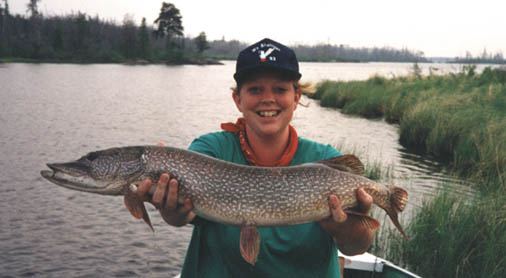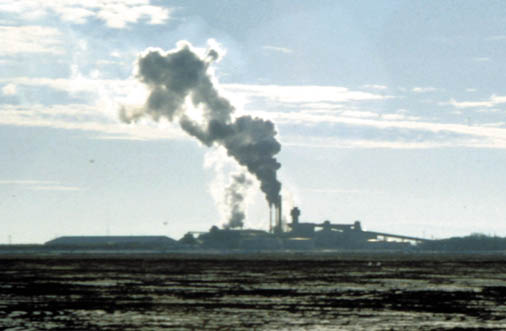MAJOR ISSUES AND FINDINGS
(D) Effects of other Nonpoint-Source Toxic Compounds on Water Quality
Fish tissues, streambed sediments, and water in shallow aquifers were examined for potentially toxic chemicals. Many of the chemicals are associated with modern industrial sources, which are relatively sparse in the largely rural Red River Basin Study Unit.
PCBs are a class of industrial compounds
that have been banned in the United States because of their toxicity and
persistence in the environment. PCBs are synthetic so there are no natural or
background levels of these compounds. Atmospheric transport of mercury, PCBs,
and PAHs may carry these contaminants far
from their sources (reviewed by Brigham and
others, 1998). VOCs include both synthetic chlorinated compounds and compounds of natural origin, such as components of petroleum. These compounds have been widely dispersed in the environment by human activity.
Many of the contaminants detected in the Study Unit are present in aquatic ecosystems worldwide. Mercury and PAHs occur naturally but also are released to the environment from industrial activities such as fossil-fuel combustion and garbage incineration (table 4).
Table 4. Mercury and PCB levels were analyzed in fish tissue; several water-quality indicators were used to assess nonpoint-source toxic compounds
| Chemicals examined |
Sources |
| Mercury |
coal burning, waste incineration |
| Polychlorinated biphenyls (PCBs) |
electrical transformers, other |
| Polycyclic aromatic hydrocarbons (PAHs) |
fossil fuels, combustion by-products |
| Volatile organic compounds (VOCs) |
industrial solvents, petroleum |
Medium-sized carp (about 2-4 pounds) in the Red River had an average mercury
concentration
of 0.31 part per
million (ppm) in the muscle (fillet) tissue. Smaller channel catfish
(about 0.5-1 pound) had lower mercury levels, averaging 0.18 ppm (Goldstein and
others, 1996a). These concentrations are in the moderate range of
Minnesota's fish-consumption guidelines. Although fish from this study had
mercury concentrations lower than the U.S. Food and Drug Administration's
1-ppm standard, larger catfish and other game fish from the Study Unit
analyzed by the Minnesota Department of Natural Resources (1994) exceeded this standard.
Polychlorinated biphenyls were commonly detected in low concentrations in fish samples.
Few fish samples had PCB levels in the moderate range of fish-consumption
guidelines (Brigham and others, 1998).

Northern pike are common game fish in lakes and rivers in the Red River Basin (photograph courtesy of Dennis Conroy).
Polycyclic aromatic hydrocarbons were widely detected in bed sediments.
Bed sediment samples at few sites had PAH levels that were potentially high
enough to adversely affect aquatic organisms, based on published toxicity
studies (reviewed in Brigham and others, 1998). See tables 8 and 9, p. 27-29, for specific PAH and other semivolatile organic compounds detected and their range of concentration.
Volatile organic compounds were rarely detected in shallow ground
water and when detected were at concentrations well below USEPA drinking-water standards.
VOCs were sampled in shallow ground water mostly beneath agricultural areas
and under ice conditions in the Red River. Most VOC concentrations were below
detection limits. Compounds that are in gasoline were detected in one well. It
is possible that the well was contaminated during construction, and that
sample might not be representative of the ground water in the aquifer (Cowdery, 1997).

Fossil-fuel combustion is a major source of polycyclic aromatic hydrocarbons.

